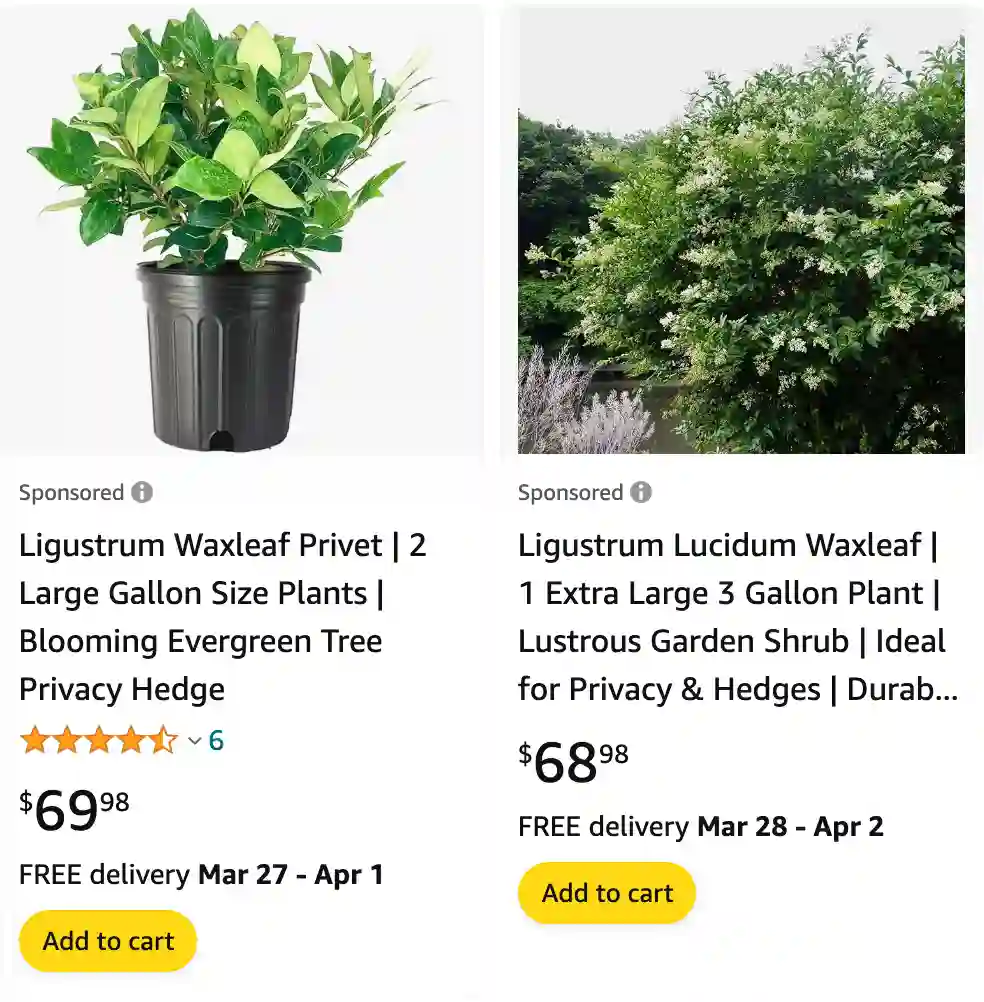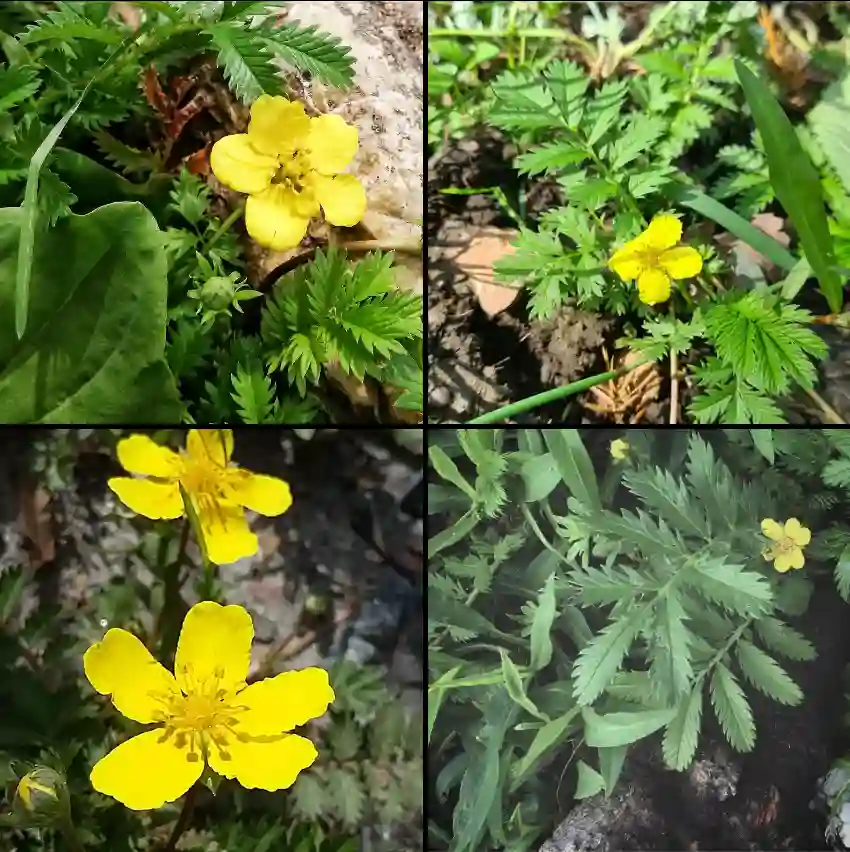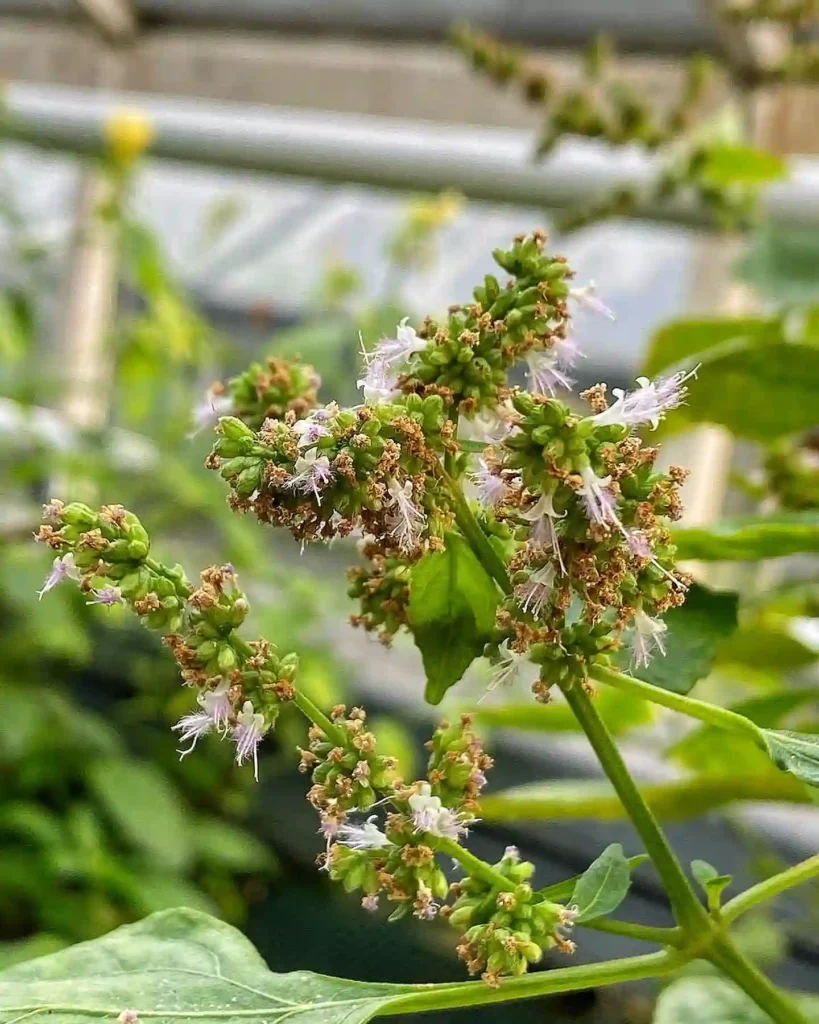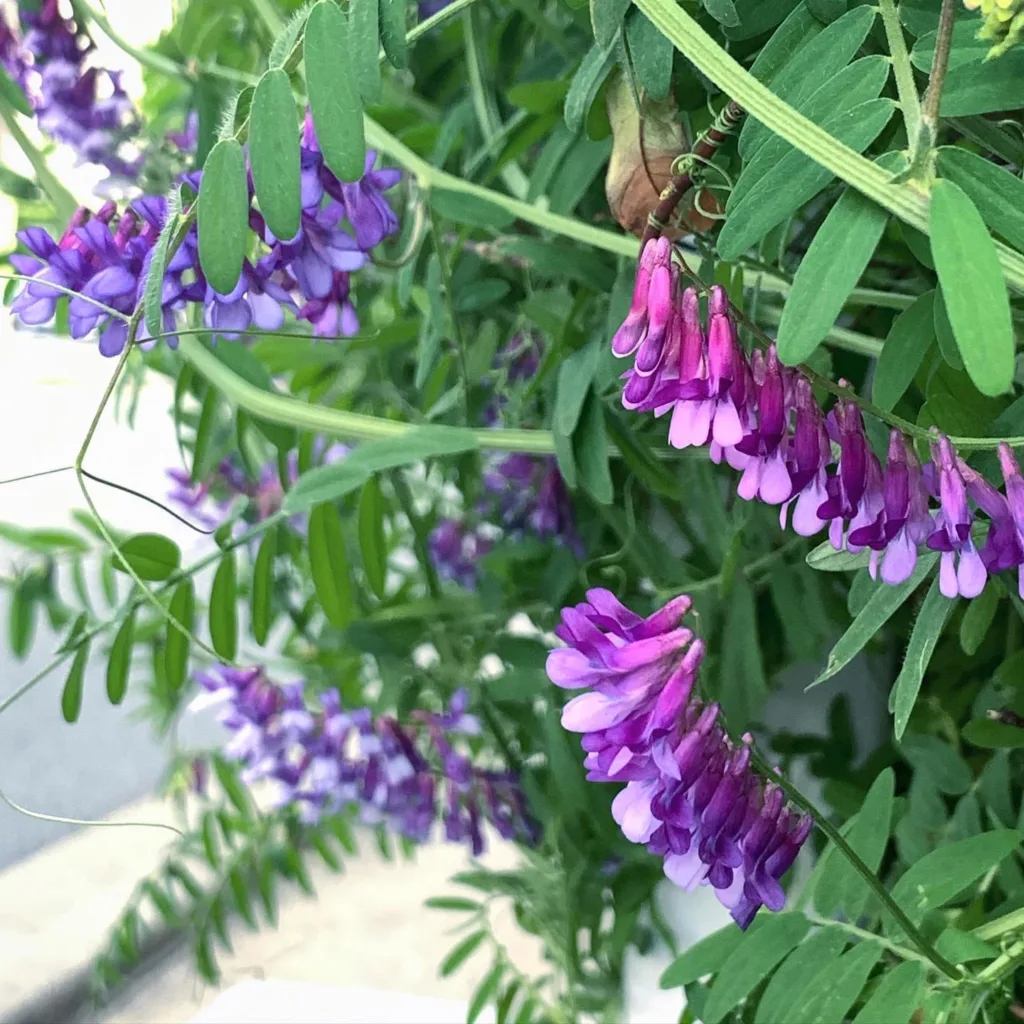
Wax Leaf Ligustrum vs Privet
I found that Wax Leaf Ligustrum adds a lush, glossy green look to my garden, and its dense foliage provides great privacy screening, which I really appreciate. In contrast, Privet, while hardy and fast-growing, requires more frequent pruning to maintain its shape and can sometimes be invasive, spreading beyond where I intended it to grow.
46 Species in Genus Ligustrum – Privet
How far apart to plant wax leaf ligustrum?
When planting Wax Leaf Ligustrum, I usually space them about 4 to 6 feet apart to allow for adequate growth and airflow between the plants. They can fill in nicely over time, creating a dense and attractive hedge or border in the landscape.
How fast does wax leaf ligustrum grow?
In terms of growth rate, Wax Leaf Ligustrum is relatively fast-growing, adding about 12 to 24 inches of height per year under ideal conditions.
How to plant wax leaf ligustrum?
To plant Wax Leaf Ligustrum, I dig a hole slightly wider and just as deep as the root ball. After placing the plant in the hole, I backfill with soil, making sure the top of the root ball is level with the surrounding ground. Watering thoroughly after planting helps settle the soil and reduce transplant shock.
How to propagate wax leaf ligustrum?
Propagating Wax Leaf Ligustrum can be done through several methods, including stem cuttings and layering. I’ve had success with taking semi-hardwood cuttings in late spring or early summer, dipping the cut ends in rooting hormone, and planting them in a well-draining rooting medium. With proper care and humidity, the cuttings usually root within a few weeks.
Is wax leaf ligustrum invasive?
While Wax Leaf Ligustrum is not considered invasive in most areas, it can spread by seed and root suckers under certain conditions. It’s essential to monitor its growth and prevent it from escaping into natural areas where it could potentially become invasive.
Is wax leaf ligustrum poisonous to dogs?
Wax Leaf Ligustrum is not known to be toxic to dogs, but ingesting large quantities of any plant material can cause gastrointestinal upset in pets. It’s always a good idea to monitor pets around plants and prevent them from consuming any potentially harmful foliage.
When to prune wax leaf ligustrum?
I typically prune Wax Leaf Ligustrum in late winter or early spring before new growth begins. This helps maintain its shape, promote bushier growth, and remove any dead or damaged branches. Light pruning throughout the growing season can also help control size and shape.
Will wax leaf ligustrum grow in shade?
While Wax Leaf Ligustrum prefers full sun to partial shade, it can tolerate some shade, although it may not flower as profusely in low light conditions. Providing at least 4 to 6 hours of sunlight per day is ideal for healthy growth and flowering.
How tall will wax leaf ligustrum grow?
Wax Leaf Ligustrum can reach heights of 8 to 12 feet tall with a spread of 6 to 10 feet, making it a versatile shrub for hedges, screens, or standalone specimens in the landscape.
Are wax leaf ligustrum mold?
Wax Leaf Ligustrum is not inherently moldy, but like any plant, it can develop mold or fungal issues if conditions are too damp or if airflow is restricted. Ensuring proper spacing, good drainage, and adequate airflow around the plants can help prevent mold and fungal problems.
Are wax leaf ligustrum poisonous?
Wax Leaf Ligustrum is not considered poisonous, but consuming large quantities of any plant material can cause gastrointestinal upset in humans and pets. It’s always a good idea to monitor pets and children around plants and prevent them from consuming any potentially harmful foliage.
Are wax leaf ligustrum prone to disease and fungus?
While Wax Leaf Ligustrum can be susceptible to some diseases and fungal issues, such as leaf spot or powdery mildew, they are generally considered relatively low-maintenance and resilient shrubs when provided with proper growing conditions.
Are wax leaf ligustrum roots compact?
The roots of Wax Leaf Ligustrum are relatively compact, forming a dense network close to the soil surface. They’re not typically invasive or aggressive, but like any plant, they can cause issues if planted too close to structures or hardscapes.
Can i plant wax leaf ligustrum in fall?
Planting Wax Leaf Ligustrum in fall can be done in areas with mild winters, allowing the roots to establish before the onset of colder weather. However, in colder climates, it’s generally best to plant in spring to give the shrub the best chance of survival through the winter.
Do deer eat wax leaf ligustrum?
While deer typically avoid eating Wax Leaf Ligustrum due to its bitter taste and tough foliage, they may browse on it if other food sources are scarce. Using deer repellents or fencing can help protect vulnerable plants from deer damage.
Do wax leaf ligustrum freeze?
Wax Leaf Ligustrum is generally hardy in USDA zones 7 to 10 and can tolerate brief periods of freezing temperatures. However, prolonged exposure to freezing temperatures or harsh winter conditions can damage or kill the plant.
Does the wax leaf ligustrum have big roots?
Wax Leaf Ligustrum typically develops a fibrous root system with no large, invasive roots. However, like any plant, it’s essential to consider its mature size and root spread when planting near structures or hardscapes.
How long do wax leaf ligustrum live?
Wax Leaf Ligustrum can live for several decades with proper care and maintenance. Regular watering, fertilizing, and pruning can help prolong the lifespan of these resilient shrubs, providing years of beauty and enjoyment in the landscape.
Is wax leaf ligustrum an evergreen? Does wax leaf ligustrum lose leaves in autumn?
Wax Leaf Ligustrum is generally evergreen in warmer climates, retaining its glossy green foliage year-round. In colder climates, it may lose some leaves during the winter months but will typically remain partially evergreen.
Where to buy wax leaf ligustrum?
Wax Leaf Ligustrum can be purchased from various nurseries, garden centers, and online retailers specializing in shrubs and landscape plants. It’s essential to choose healthy, well-established plants with strong roots and vibrant foliage for the best results.
If i die, water my plants!



